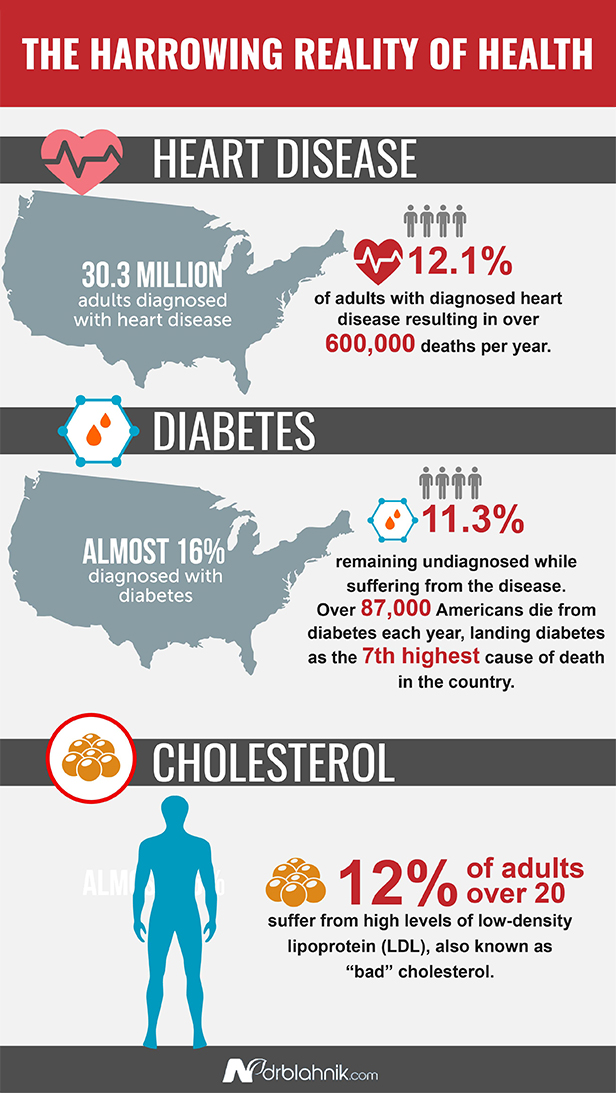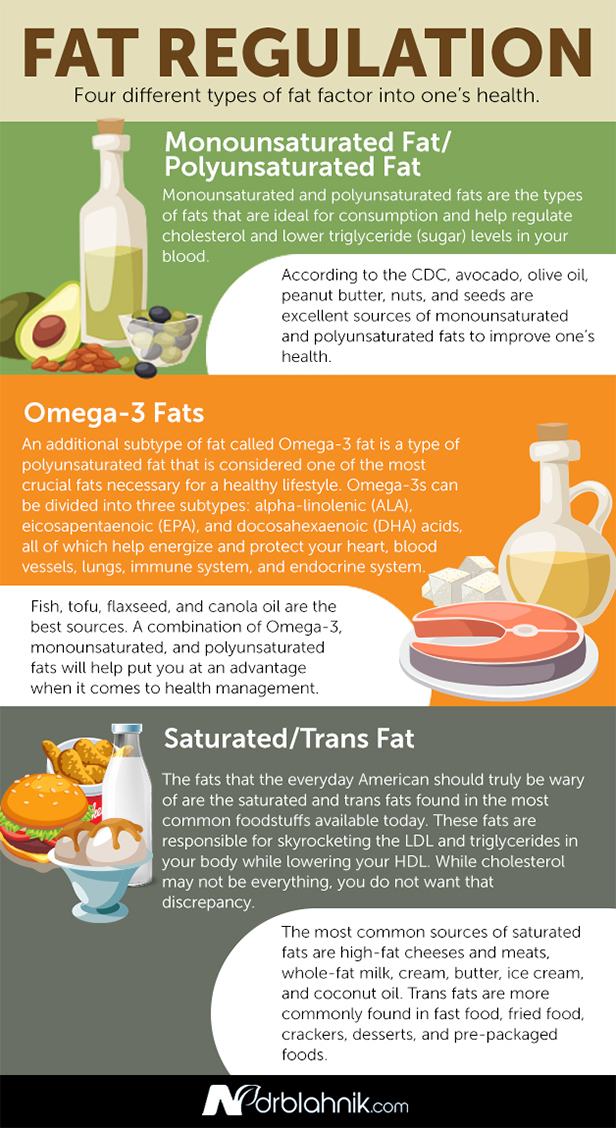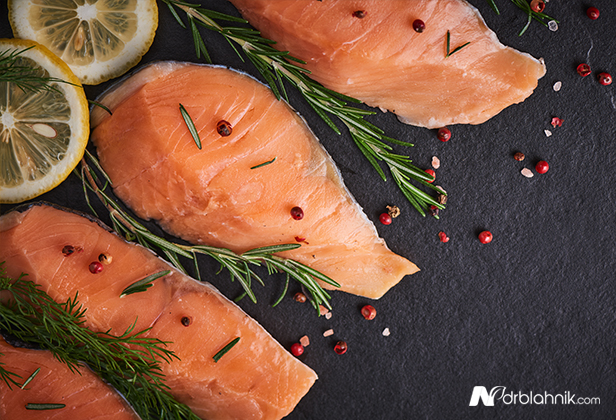

Here in the United States of America, one of the most significant health issues we face is caused by poor dietary habits. We live in a country where the most easily accessible food sources, both financially and geographically, are fast-food restaurants. This, unfortunately, leads to diets that are quite dangerous for the average American.
Fortunately, there are professionals who are willing and able to give guidance and provide products to help us balance out and even change our diets completely to become a healthier example of the average American citizen.
The United States of America is sadly known as being one of the unhealthier nations in the world. In fact, the leading cause of death in the country is heart disease born of poor dietary habits.

Heart Disease: According to the Center for Disease Control, over 30,000,000 American adults suffer from heart disease, making up over 12% of our population and resulting in over 600,000 deaths per year.
Diabetes: According to the Centers for Disease Control and Prevention, almost 16% of the American population has been diagnosed with diabetes, with another 11.3% remaining undiagnosed while suffering from the disease. Over 87,000 Americans die from diabetes each year, landing diabetes as the 7th highest cause of death in the country.
Cholesterol: According to the CDC, 12% of adults over 20 suffer from high levels of low-density lipoprotein (LDL), also known as “bad” cholesterol.
As the state of health in the country diminishes and the death rate spikes, we are left fighting an uphill battle to correct our country’s health issues before they overtake us completely. The most important tool in any battle is information about what exactly factors into our health and how to maintain it better.
An unfortunate reality is that the typical individual is not fully informed about what cholesterol is, how it affects us, and what can be done to correct it. The first, and most important thing, to know is that there are two types of cholesterol.
High-Density Lipoprotein (HDL): HDL, colloquially referred to as the “good” cholesterol, carries the cholesterol in your body toward the liver to be expelled. Therefore, it is advised by medical professionals to keep your HDL between 40 to 60 milligrams per deciliter (mg/dL).
Low-Density Lipoprotein (LDL): LDL, or the “bad” cholesterol, is not as easy to transport through the body and will build up in your arteries, leading to heart disease that afflicts so many Americans. Medical professionals across the globe have proven that the ideal level of LDL in the human body is less than 100 mg/dL.
Now, you might be wondering what the purpose of cholesterol is if the ideal is for our livers to expel the substance from our bodies. The answer to that is simple. Cholesterol, like almost everything in life, serves an actual purpose when moderated. Cholesterol is one of the key ingredients our bodies use to make vital biological substances such as Vitamin D, bile acids, and hormones like estrogen and testosterone. It’s one of many examples of “too much of a good thing.”
While cholesterol likely seems like a major culprit in the heart disease/diabetes war, one of the larger issues comes from fat. Not necessarily the weight you have or put on, but the fat in what you are eating dictates a great deal about the state of your health. While the term “fat” has a primarily negative connotation among the average Americans who care to tend to their health, there is a distinction between “good” fat and “bad” fat. Four different types of fat factor into one’s health.

Monounsaturated Fat/Polyunsaturated Fat: Monounsaturated and polyunsaturated fats are the types of fats that are ideal for consumption and help regulate cholesterol and lower triglyceride (sugar) levels in your blood. According to the CDC, avocado, olive oil, peanut butter, nuts, and seeds are excellent sources of monounsaturated and polyunsaturated fats to improve one’s health.
Omega-3 Fats: An additional subtype of fat called Omega-3 fat is a type of polyunsaturated fat that is considered one of the most crucial forms of fats necessary for a healthy lifestyle. Omega-3s can be divided into three subtypes: alpha-linolenic (ALA), eicosapentaenoic (EPA), and docosahexaenoic (DHA) acids, all of which help energize and protect your heart, blood vessels, lungs, immune system, and endocrine system. Fish, tofu, flaxseed, and canola oil are the best sources. A combination of Omega-3, monounsaturated, and polyunsaturated fats will help put you at an advantage when it comes to health management.
Saturated/Trans Fat: The fats that the everyday American should truly be wary of are the saturated and trans fats found in the most common foodstuffs available today. These fats are responsible for skyrocketing the LDL and triglycerides in your body while lowering your HDL. While cholesterol may not be everything, you do not want that discrepancy. The most common sources of saturated fats are high-fat cheeses and meats, whole-fat milk, cream, butter, ice cream, and coconut oil. Trans fats are more commonly found in fast food, fried food, crackers, desserts, and pre-packaged foods.
Managing cholesterol and fats is one thing, but one risk factor for heart disease you seldom hear about in mainstream medical media is inflammation. When a body detects something harmful, it responds by inflaming the affected area, restricting the flow of whatever is there as it attempts to heal. In the case of cardiovascular issues, this inflammation occurs near your heart. The inflammation of one’s heart is far more common than one might think, given the level of hazards you may not realize are even there. One of the leading causes of inflammation is toxins in the world we live in that we are not told to check for by most professionals.
Household cleaners, hygiene products, plastics, heavy metals, even medications all have the risk of carrying toxins our bodies are not prepared to handle. Your trash can, deodorant, or even your aspirin could contain harmful metals or toxins that could inflame or otherwise harm your heart and make you more susceptible to heart disease. However, like the other factors, these toxins can also be carried in the foods we eat. Dairy products and certain meats specifically.

The diets most associated with the trauma-causing inflammation consist mainly of processed and artificially dyed foods. To combat this, we have listed several dietary changes that can be used to prevent the inflammation of the cardiac system to lessen ones’ risk for heart disease.
We also have more common advice, such as focusing on consuming more water than soft drinks. This advice helps foster a more pristine and sustainable body that minimizes the risk of inflammation, therefore minimizing the risk of cardiac diseases, diabetes, and other dietary-based issues that plague the average American citizen.
So far, the advice given has been researched and thought out to maximize a healthier, happier human being. However, the advice is all well and good until you can no longer afford to take it. A sad reality we all face is that the American people tend to gravitate towards unhealthy dietary habits as a means of fiscal responsibility rather than health. Nowadays, it is cheaper and simpler to pull into the drive-thru of your local Burger King and order a Whopper than it is to purchase the ingredients to make a healthy, home-cooked meal.

If you were to decide that they wanted to make a kale salad with apples, cranberries, and pecans for dinner one night to make your diet a little healthier, and you went into your local Whole Foods, you would be leaving with a hefty gap in your wallet.
Using this recipe, the actual salad alone would set one back $24.94. In contrast, a meal from a fast-food drive-thru will only run about $10.00. In fact, a study from Medline and Harvard University (published in BMJ Journal) determined that the price of a healthy dietary lifestyle costs an additional $1.50 per day even when cooking for yourself with lesser ingredients.
According to the study from BMJ Journal: “27 studies from 10 countries met the inclusion criteria. Among food groups, meats/protein had the largest price differences: healthier options cost $0.29/serving (95% CI $0.19 to $0.40) and $0.47/200 kcal ($0.42 to $0.53) more than less healthy options. Price differences per serving for healthier versus less healthy foods were smaller among grains ($0.03), dairy (−$0.004), snacks/sweets ($0.12), and fats/oils ($0.02; p<0.05 each) and not significant for soda/juice ($0.11, p=0.64). Comparing extremes (top vs bottom quantile) of food-based diet patterns, healthier diets cost $1.48/day ($1.01 to $1.95) and $1.54/2000 kcal ($1.15 to $1.94) more. Comparing nutrient-based patterns, the price per day was not significantly different (top vs bottom quantile: $0.04; p=0.916), whereas the price per 2000 kcal was $1.56 ($0.61 to $2.51) more. Adjustment for the intensity of differences in healthfulness yielded similar results.”
It may seem intimidating having to manage your health by yourself when you are not likely to have the in-depth knowledge needed off the top of your head. Fortunately, there exist programs to guide and educate the average American on how to improve their lifestyles. Cookbooks designed to help plan healthier meals to introduce more “good” fats and minimize inflammation, like Simply Eat Real Foods by Dr. Emmett Blahnik or Healthy, Lean & Fit by Gordon Ramsay, are available for purchase to help introduce better dietary habits into a household with the resources available to them.
It is ideal to start introducing foods like salmon, berries, grass-fed beef, fruits, and vegetables as regular staples of your diet whenever you can to help promote the generation of Omega-3 fatty acids in your system. Minimize the number of times you go out for fast-food with the end goal of eliminating such trips entirely. A homecooked meal will always promote a healthier lifestyle than continually eating out, regardless of if you are trying to manage your cholesterol or introduce essential acids into your body.

An additional avenue for maintaining a somewhat healthy lifestyle even with lesser ingredients for home-cooking comes in the form of health supplements and vitamins. There are vitamins designed to boost your health even when the best possible food is not readily available.
Medium-Chain Triglyceride (MCT) Oil: MCT oil allows you to introduce medium-chain triglycerides, which are fats that accomplish a similar goal to monounsaturated and polyunsaturated fats in the body. MCT oil has a thermogenic effect, tapping into your body fat to generate body heat and energy.
Omega Supplements: It is possible to get the necessary Omega-3 fatty acids in the form of a small capsule to supplement your diet when fish or other Omega-3 foods are unavailable.
If you are feeling truly unsure, you could even consult your primary physician or a licensed dietician to get pointers on how to start improving your dietary habits to minimize the risk of cardiac disease or diabetes.
Diet is not an easy thing to regulate these days. Though we know more about health and diet than we did even 20 years ago, we face new challenges that prevent us from actively pursuing healthier lifestyles. Even then, we face inconsistencies about which practices benefit us as more and more hypotheses are brought to light. That said, one of the best things you can do is pursue every avenue of improving your health as possible.
Whether it is using supplements offered by experts, using new recipes to minimize your consumption of unhealthy foods, or even seeking professional medical assistance, it is never too late to start managing your body, regulating cholesterol, and taking measures to decrease the risk of inflammation.